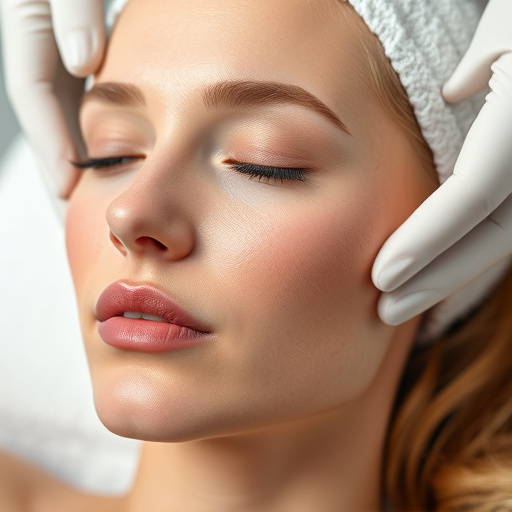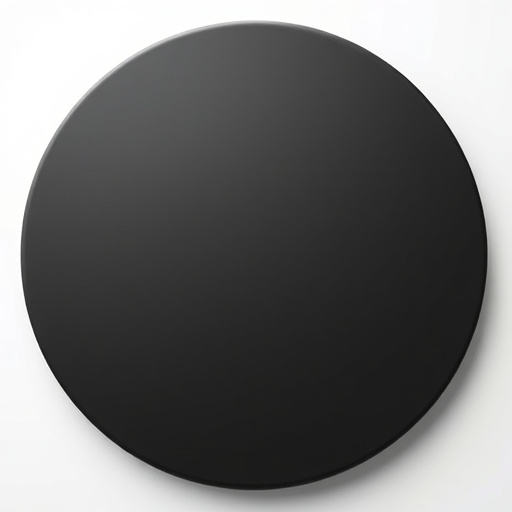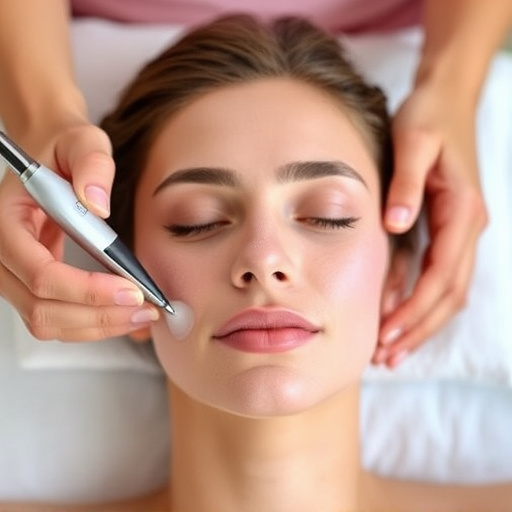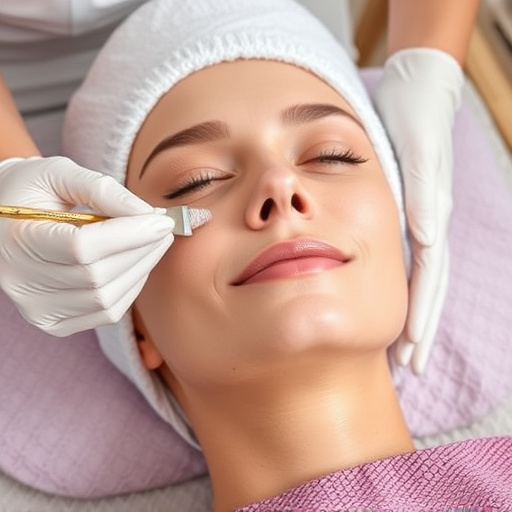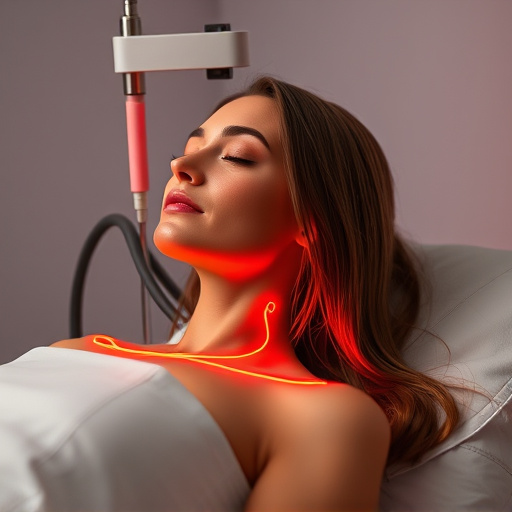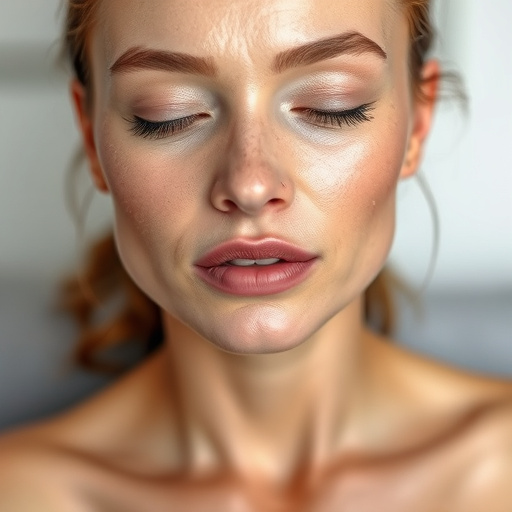Uneven skin tone, caused by various factors like sun damage, aging, and inflammation, requires a dermatologist's expertise for diagnosis. Customized non-surgical treatments include facials and anti-aging solutions. Topical treatments like chemical exfoliants (AHAs/BHAs) and retinoids address discoloration. Intense procedures like laser therapy and microdermabrasion, recommended by dermatologists, offer comprehensive skin brightening and tightening solutions.
Uneven skin tone can be a common concern, but with the right approach, achieving a more uniform complexion is achievable. This article delves into effective treatments backed by dermatologists to address this issue. We explore two main categories: topical solutions like chemical exfoliants and retinoids, known for their ability to brighten and smoothen skin; and procedural options such as laser therapy and microdermabrasion, offering more intense yet targeted results. By understanding the causes and diagnosis, you can select the best dermatologist-recommended treatment for your specific needs.
- Understanding Uneven Skin Tone: Causes and Diagnosis
- Topical Treatments: Chemical Exfoliants and Retinoids
- Procedural Options: Laser Therapy and Microdermabrasion
Understanding Uneven Skin Tone: Causes and Diagnosis
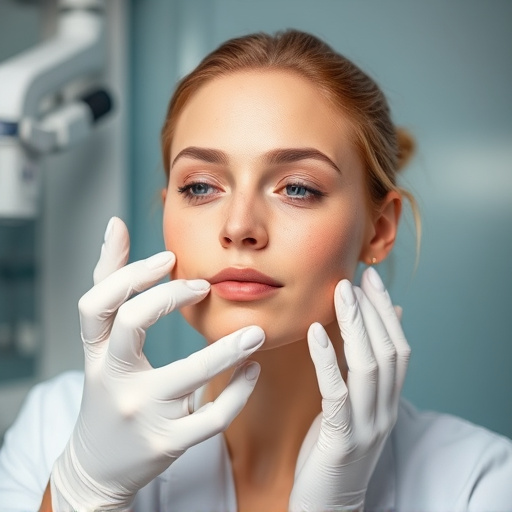
Uneven skin tone is a common concern that can be caused by various factors, leading to discoloration and an overall uneven appearance. It’s essential to understand the root causes to effectively address this issue. Dermatologists attribute uneven skin tone to several contributors, including sun exposure, aging, hormonal changes, post-inflammatory hyperpigmentation, and certain medical conditions. Chronic sun damage is a significant culprit, as UV rays can trigger melanin production, resulting in dark spots or patches of darker skin.
Diagnosing uneven skin tone involves a comprehensive evaluation by a dermatologist recommended expert. They will consider factors like family history, lifestyle, and any recent skin injuries or inflammations. A visual examination, often accompanied by specific lighting techniques, helps identify the extent and type of discoloration. This process is crucial as it allows for tailoring non-surgical treatments, such as hydrating facials and anti-aging solutions, to address the unique needs of each patient’s skin.
Topical Treatments: Chemical Exfoliants and Retinoids
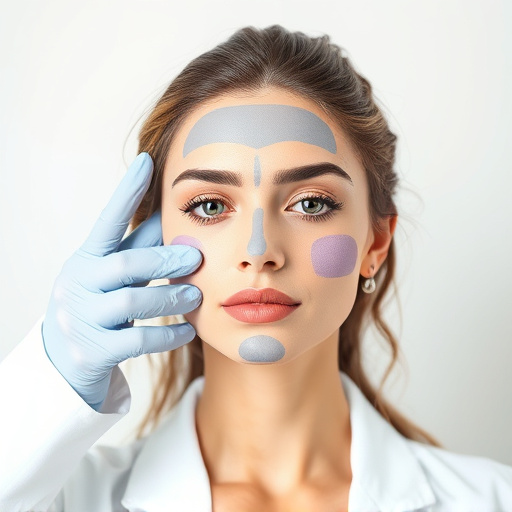
Uneven skin tone can be addressed through various dermatologist-recommended topical treatments. Chemical exfoliants are a popular choice, utilizing alpha hydroxy acids (AHAs) or beta hydroxy acids (BHAs) to gently slough off dead skin cells and reveal brighter, more even skin beneath. These acids help to break down pigmented spots and fine lines, enhancing overall texture and tone. Retinoids, a class of vitamin A derivatives, are another powerful tool in the dermatologist’s arsenal. They accelerate cell turnover, promoting skin rejuvenation and reducing the appearance of age spots and hyperpigmentation.
While retinoids can be potent, chemical exfoliants offer a gentler approach to achieving a radiant complexion. Regular use of these treatments, often combined with other dermatologist-prescribed products, can significantly improve skin texture and tone. For those seeking more intense results, medical spa services like skin tightening and rejuvenation procedures can complement topical care, providing a comprehensive solution for achieving an even, youthful glow.
Procedural Options: Laser Therapy and Microdermabrasion

Procedural options like laser therapy and microdermabrasion are among the dermatologist-recommended treatments for achieving an even skin tone. Laser therapy is a highly targeted approach that uses specific wavelengths of light to stimulate collagen production, which not only improves skin texture but also helps to even out pigmentations and reduce the appearance of age spots or sun damage.
Microdermabrasion, on the other hand, involves gently exfoliating the outer layer of skin using fine crystals or a special device. This procedure removes dead skin cells and unclogs pores, revealing smoother, brighter skin underneath. Both methods are popular choices for those seeking not just skin brightening but also skin tightening and body contouring benefits, making them excellent options for addressing uneven skin tone concerns.
When it comes to addressing uneven skin tone, there are several effective options backed by dermatologists. From topical treatments like chemical exfoliants and retinoids to procedural solutions such as laser therapy and microdermabrasion, each method offers unique benefits. By understanding the causes and diagnosis of this common concern, individuals can select the best course of action for achieving a more even and radiant complexion. Remember, consulting a dermatologist is essential for personalized guidance and optimal results.



